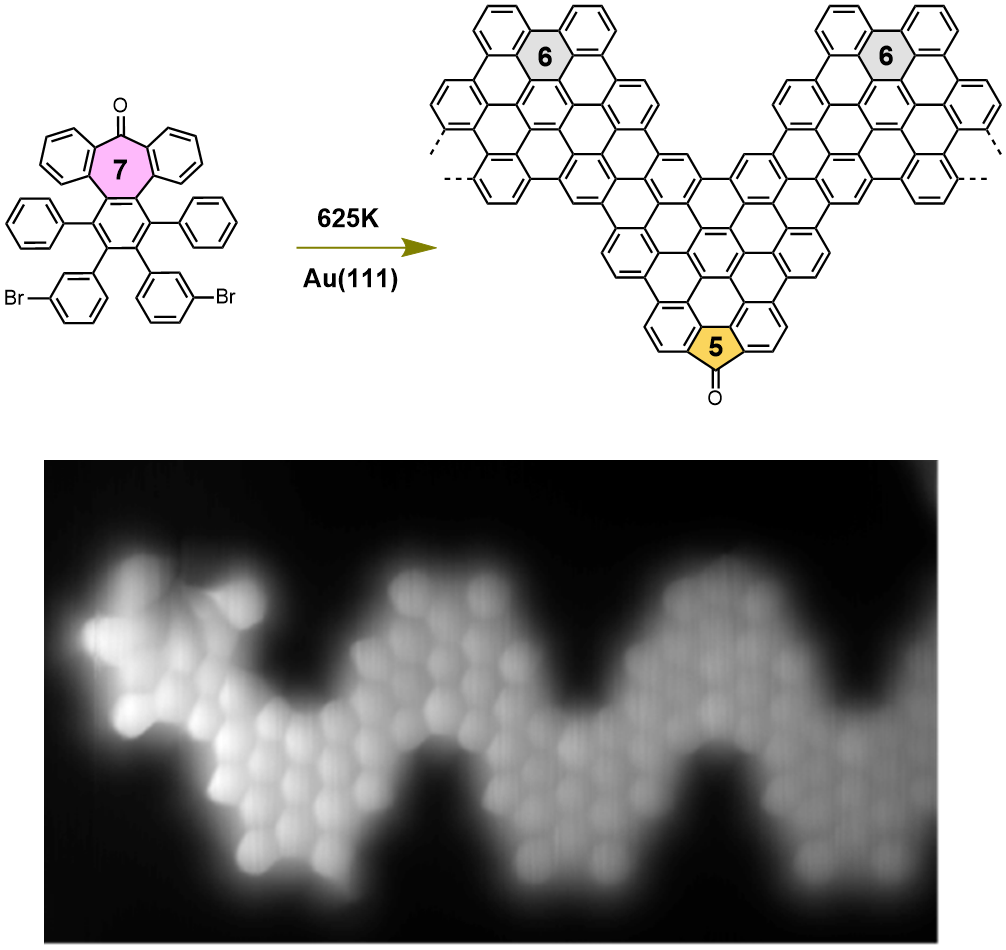Graphene nanoribbons, GNRs, – narrow stripes of graphene – are predicted to exhibit attractive electronic properties for the fabrication of nanoscale electronic devices. This 1D material shows semiconducting properties that can be tuned by modifying its length, width, or topology border; but also, with the presence of defects in form of heteroatoms or non-hexagonal rings.

In this work, we explore the introduction of defects, in form of tropone units (heptagonal rings), in the precursor molecule that forms the GNRs, studying the thermal stability of this motif on an Au(111) gold surface. We were able to demonstrate that these moieties are transformed into phenyl (hexagonal ring) or cyclopentadienone units (pentagonal rings) through an unprecedented surface-mediated retro-Buchner-type reaction, already seen in solution chemistry.
Full text in this link
On-surface Thermal Stability of a Graphenic Structure Incorporating a Tropone Moiety, R. Márquez, N. Ruiz del Árbol, J. I. Urgel, F. Villalobos, R. Fasel, María F. López, J. M. Cuerva, J. A. Martín-Gago, A. G. Campaña, C. Sánchez-Sánchez, Nanomaterials, 12 (2022) 488.

